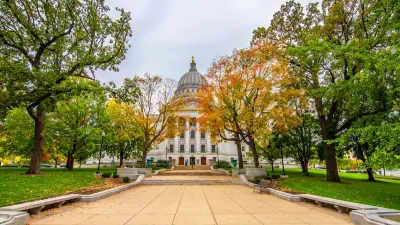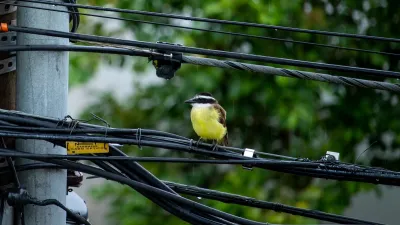Courtney Humphries takes a look at recent federal investment in research on the complex interrelationship between human settlements and the natural environment.
The field of urban research has a way of getting bogged down in the details of human politics and behavior. Questions of transit logistics, housing policy, economic development, and beyond can make long-term environmental considerations seem secondary, paramount as they are to human health and the ultimate viability of our policy choices.
Fortunately for urban ecologists, however, the National Science Foundation and U.S. Forest Service moved in 2009 to commit $6 million to projects probing the impact that cities create on the ecologies within them, giving birth to a wave of research projects that are reshaping our understanding of the environments we create.
"Many scientists see these grants, dubbed 'Urban Long-Term Research Areas: Exploratory' (ULTRA-Ex) awards, as the first step towards fostering a much-needed research network for long-term projects in urban ecology," writes Humphries.
In one such project, Boston University researcher Nathan Phillips is mapping the composition of the city's air: "Phillips and his colleagues are using data from these sites to model how carbon dioxide and other gases move through the city, and how the mix differs from the air in rural areas. The work is part of an interdisciplinary project to study Boston's 'metabolism' — how elements are exchanged between natural and human systems. Next, they plan to look at carbon in the city's soils and water, and to track the flow of water, nitrogen and pollutants. 'The goal is to understand the function of a major city,' Phillips says."
"The NSF has funded this type of work since the late 1990s, when it set up Long-Term Ecological Research (LTER) sites in Phoenix, Arizona, and Baltimore, Maryland," notes Humphries. "But such examples are rare. This year, an analysis of more than 8,000 ecological studies found that only 4% assessed densely populated areas, despite calls from some ecologists and the NSF for more investigation of how people shape environments."
Another study out of Ohio State University in Wooster has found that soil in many vacant lots in Cleveland are suitable for planting crops, promising to save millions of dollars in annual maintenance costs.
With such investments in this field of research, policymakers may soon have a better framework in which to evaluate environmentally-oriented programs. "As cities begin to take carbon regulation more seriously, 'we need to have a transparent, robust, verifiable reporting of carbon dioxide emissions', says [Lucy Huytra of Boston University]. Otherwise, cities cannot track their successes and failures."
FULL STORY: The science of cities: Life in the concrete jungle

Alabama: Trump Terminates Settlements for Black Communities Harmed By Raw Sewage
Trump deemed the landmark civil rights agreement “illegal DEI and environmental justice policy.”

Planetizen Federal Action Tracker
A weekly monitor of how Trump’s orders and actions are impacting planners and planning in America.

Why Should We Subsidize Public Transportation?
Many public transit agencies face financial stress due to rising costs, declining fare revenue, and declining subsidies. Transit advocates must provide a strong business case for increasing public transit funding.

Understanding Road Diets
An explainer from Momentum highlights the advantages of reducing vehicle lanes in favor of more bike, transit, and pedestrian infrastructure.

New California Law Regulates Warehouse Pollution
A new law tightens building and emissions regulations for large distribution warehouses to mitigate air pollution and traffic in surrounding communities.

Phoenix Announces Opening Date for Light Rail Extension
The South Central extension will connect South Phoenix to downtown and other major hubs starting on June 7.
Urban Design for Planners 1: Software Tools
This six-course series explores essential urban design concepts using open source software and equips planners with the tools they need to participate fully in the urban design process.
Planning for Universal Design
Learn the tools for implementing Universal Design in planning regulations.
Caltrans
Smith Gee Studio
Institute for Housing and Urban Development Studies (IHS)
City of Grandview
Harvard GSD Executive Education
Toledo-Lucas County Plan Commissions
Salt Lake City
NYU Wagner Graduate School of Public Service





























